The Empire Tractor was made in Philadelphia, Pennsylvania, by the Empire Tractor Corporation from 1946-1948. Leveraging the Willys drive train, Empire produced two different models: Model 88 and Model 90. You might have seen one of those tractors at a Willys show or for sale, but sightings are rare. The primary reason for their scarcity is that of the approximately 6,660 made around 5,370 were exported leaving about 1,290 available in the US and Canada.
The history behind the Empire Tractor company is complicated. It involves Willys Overland Motor’s largest shareholder, Empire Securities, and a successful international business man named Frank Cohen, who was investigated multiple times for suspicious financial dealings.
Here’s how and why only a few tractors were made . . .
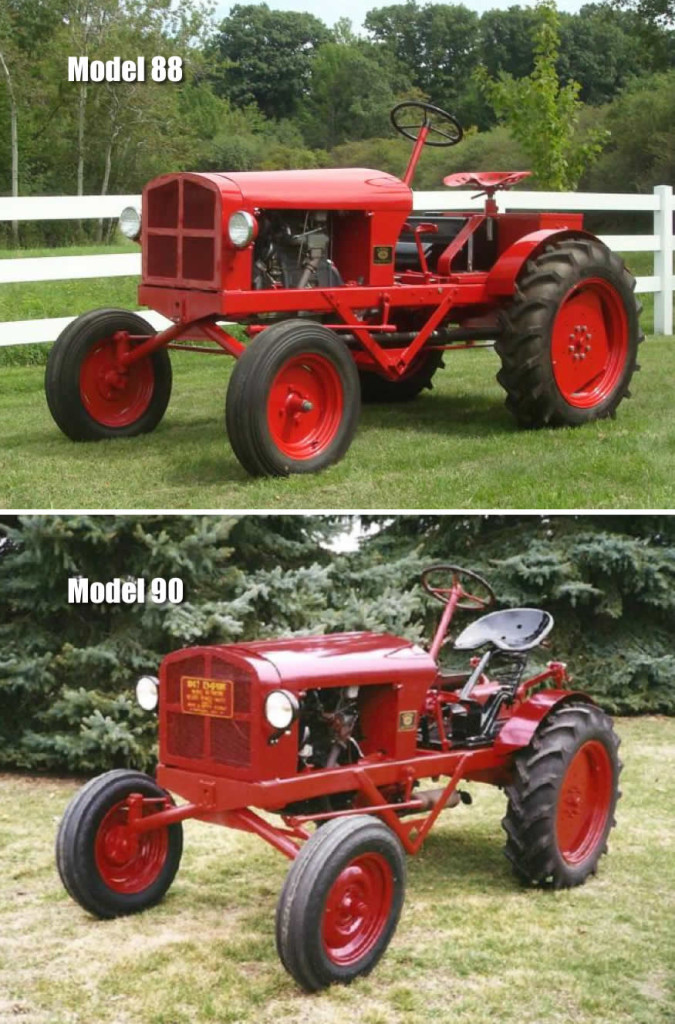
The two basic models of tractors produced by Empire Tractors. They look pretty close, but one of the most noticeable differences is the seat.
EMPIRE SECURITIES:
In 1932 George Ritter, Ward Canaday, and H.J. Leonard organized Empire Securities, Inc. They launched it as a holding company to process claims against the Willys-Overland Company, which had gone into receivership. In 1935 Empire Securities offered to buy up all the Willys-Overland Company bonds that were due two years earlier in 1933 so they could reorganize the Willys-Overland Company. In October of 1936, Empire Securities successfully rebirthed the Willys-Overland Company as Willys-Overland Motors, Inc., and became the largest shareholder. Several years later the Empire Securities founders used Willys Overland stock to partly fund a business deal with a man named Frank Cohen.
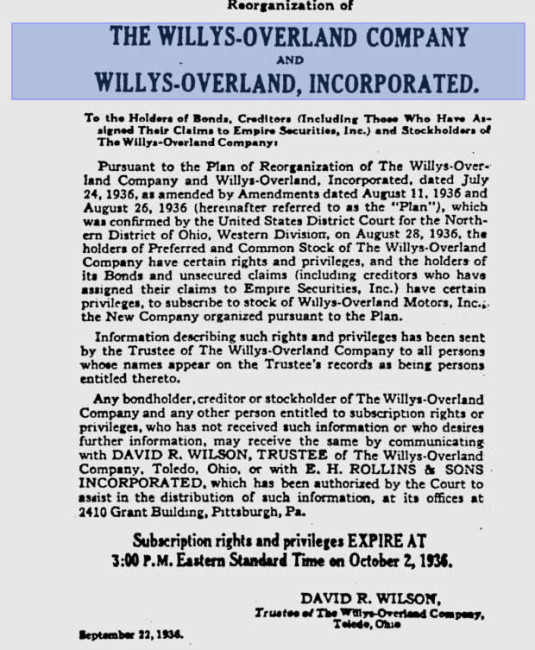
Side Note: Empire Securities continued to be the largest shareholder through 1946. Meanwhile, Ward Canady was president of Empire Securities and Chairman of the Board of Willys-Overland Motors through 1946.
FRANK COHEN
In the late 1930s Frank Cohen, a former insurance executive/wall street executive/promoter/ industrialist, had developed some kind of business relationship with the folks at Empire Securities. By 1940 Cohen was offering Willys-Overland Motors a chance to invest in Cohen’s new venture, Empire Ordnance, a company primed to supply war-time materials.
Frank Cohen began his adult life in 1916 by obtaining a PhD with the intent to teach business (his thesis argued for the novel idea of an annual wage for employees of seasonal businesses). Deciding to put his own ideas into action, he left academics to focus on business. During the 1920s and through the early 1930s Frank amassed a respectable fortune.
Then, In May 1940, he sold all his other businesses and launched Empire Ordnance, a company primed to supply war-time materials. To help finance the company, he encouraged the Empire Securities founders to invest in Empire Ordnance and join the board of directors. Canaday, Leonard, and Ritter agreed to join the board and invest 200,000 shares of Willys stock and $120,000 in cash, in a complicated transaction.
Through the summer of 1940 the ordinance business proved to be difficult. For reasons that remain unclear, Canaday, Leonard and Ritter severed all ties with Ordnance Empire, while Frank Cohen gained full control. To raise additional money, Mr. Cohen used a more traditional route to start the company; he sought straight investment from several investors, raising $130,000. Soon after that investment, Empire Ordnance landed $20 million in British Government contracts, with a $5 million dollar advance.
By 1941, according to the Pittsburgh Post-Gazette, Empire Ordnance owned 14 subsidiary companies that operated six plants and one shipyard (for the construction of Victory Ships). Empire Ordnance manufactured guns, armor plates, optical instruments, recoil mechanisms, and much more. According to former Congressman Charles West, by November 1941 Empire Ordnance had already garnered $70 million dollars worth of contracts. In fact, it was Charles West who claimed he’d helped secure many of those contracts, but after Empire failed to pay him his commission, Charles West decided to go public and sue them.
Now, this story gets complicated quickly as Cohen’s means, at least in part, for securing contracts appeared to be time-honored: he put someone powerful on his payroll so contracts could be directed toward the company. In fact, by the mid-1940s, Senator Harry Truman (later President) was investigating Cohen as a war profiteer.
COHEN LAUNCHES EMPIRE TRACTORS:
In 1946 Mr. Cohen launched Empire Tractors. But why build tractors? In an effort to help foreign countries devastated by the war, and aid in the campaign to relieve the sufferings of the starving people, Cohen came up with the idea to build a small farm tractor that would enable people to farm more efficiently and get badly needed food back on the tables. In exchange for exporting these tractors and agreeing to not compete with US and Canadian tractor companies, the US government gave Empire Tractor, at very low cost, war surplus parts to build the machine.
The first tractors were shipped to South Africa and soon after, under a contract with the United Nations Relief and Rehabilitation Administration (UNRRA) a gift of 50 tractors were shipped to Poland. Several large orders followed with the largest being an order from Argentina for 7,000 units. Problems with this order and other factors led to the company’s bankruptcy.
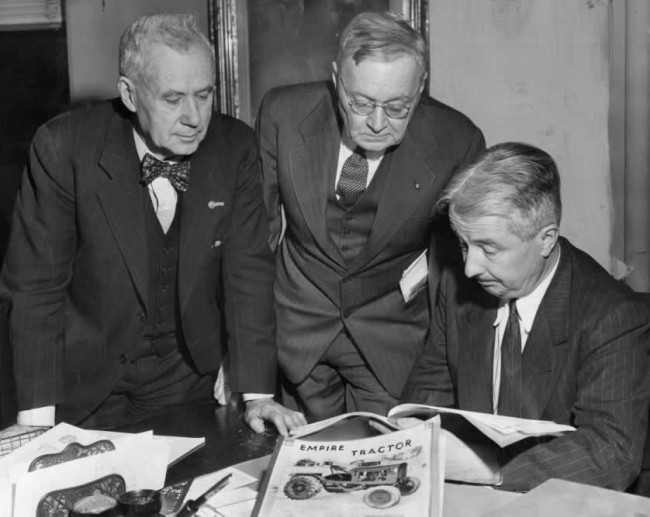
Trustees of the Empire Tractor Corporation meet to discuss bringing in Frank Cohen, the firm’s organizer, for a hearnig because Democratic National Chairman Frank McKinney made a profit of $68,000 in a stock deal involing Empire. http://digital.library.temple.edu/cdm/singleitem/collection/p15037coll3/id/955/rec/13
EMPIRE TRACTOR MODEL 88: (up to Serial #1 – #3,000) The Model 88 tractors were built using Willys surplus rebuilt engines and components purchased from the U.S. Government following World War II. Major Willys parts used included:
- MB & some GPW L-head 134 motors
- T-84 gearbox
- Spicer 18 Transfer case 1941-1945 w/ 1:97 low range
- Dual lever PTO like those used on the GPA
- Willys FRONT drive differential
- Steering column & gauges
All Model 88 tractors were exported with the exception of one. Like the Model 90, these were sold to countries around the world including South Africa, Poland, Greece, Mexico, China and others.
EMPIRE TRACTOR MODEL 90 (88-90): (Serial #3,000 – #6,801*): Sometime in early to mid-1947 production of the Model 90 began with several changes being made to the tractor. The company had run out of war surplus drivetrains so they purchased civilian parts from Willys-Overland. Changes were also made to the hood, grill, seat, battery location along with other minor updates. Major changes included:
- CJ-2A L-head 134 motors
- T-90 gearbox
- Single lever PTO
- Willys REAR drive differential
- Spicer 18 transfer case mid-1946 to 1955 w/ 1:46 low gear
Since the company still had a large number of Model 88 date plates left over, the number ’90’ was added (stamped) onto these plates (creating the data plate model 88-90) and used on the Model 90 Empire until they were gone. Later Model 90 data tags only had ’90’ on them.
PRODUCTION:
The company produced 6,660 tractors until manufacturing ceased in December of 1947. Several factors hurt the company’s viability. Though actual production ended December 1st, several tractors were assembled from left over parts, which accounts for a few tractors having 1948 manufacturing dates. The company assembled as many complete tractors as possible to boost the inventory value.
The biggest setback was the Argentina government’s decision to cut off funding after delivery of 4,300 of the 7,000 tractors ordered were delivered. Argentinians claimed the tractor was not suited for farm work in their country and refused further deliveries. Some of the tractors shipped to other countries experienced a problem with the short right side axle breaking. Then, in 1947 Time Magazine published an article stating the Empire Tractor was poorly made and should not have been sold.
BANKRUPTCY:
These factors, high manufacturing costs and increasing competition spelled the end of Empire Tractor, which filed for involuntary bankruptcy in 1948. Company assets were sold in early 1950 with all creditors being satisfied. The remaining 1,294 tractors in inventory were distributed after bankruptcy and sold by distributors and dealers throughout the US and Canada for about $700.00. Of the Model 88 tractors produced only seven have been found to date. Four were found in South Africa, two in Argentina, one in Denmark and one in the US. Serial #4 has since been exported back to the USA.
Of the 1,294 Model 90 tractors sold in the US and Canada about 380 have been found so far. In the end, the Empire proved to be well suited for orchard work and other light-duty chores, but was not designed for heavy-duty farm work.
UNIQUE ASPECTS:
A couple of things made the Empire Tractor really unique. One is the use of a straight bar hitch that pulled from under the center of the tractor (patented), which made an overturn nearly impossible. The other selling point was the Willys engine and drive train made famous during World War II. Nothing but good can be said about this combination of power and versatility especially after the heavy T-90 transmission was introduced.
The Empire was a well equipped tractor, very reliable and versatile with its wide range of speeds. Today this tractor draws a lot of attention at shows and commands higher than average prices due to collector interest. 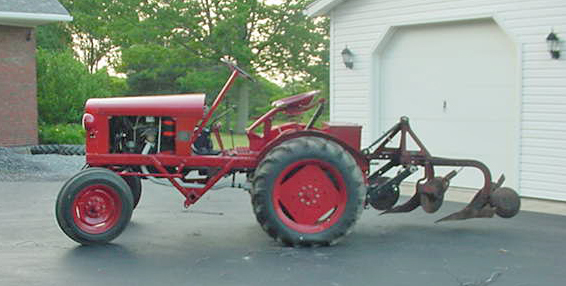
 EMPIRETRACTOR.NET:
EMPIRETRACTOR.NET:
If you want to learn more about Empire Tractors or receive their newsletter, drop by Empiretractor.net. Many thanks to Carl Hering for his help with this post!
Additional Links:
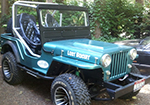
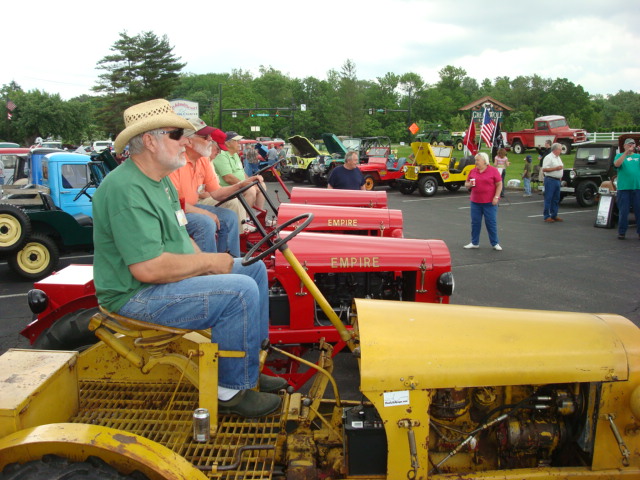

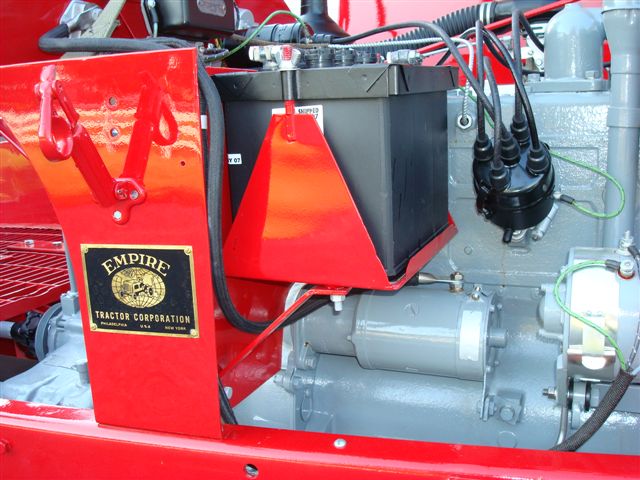
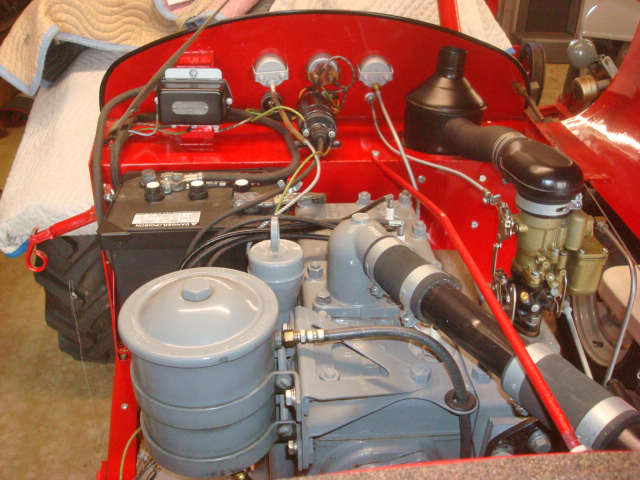
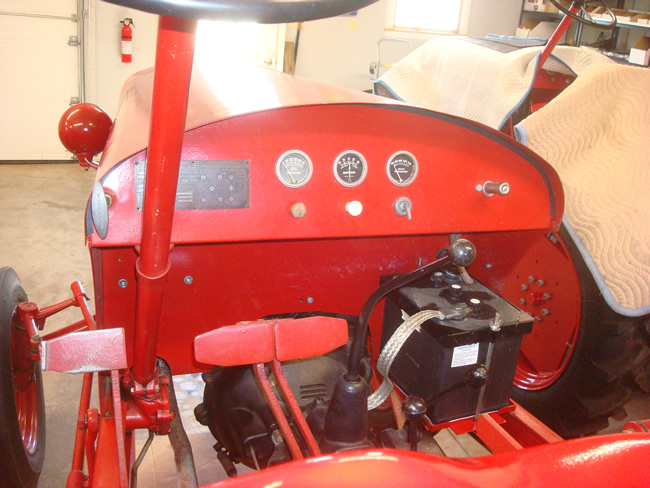
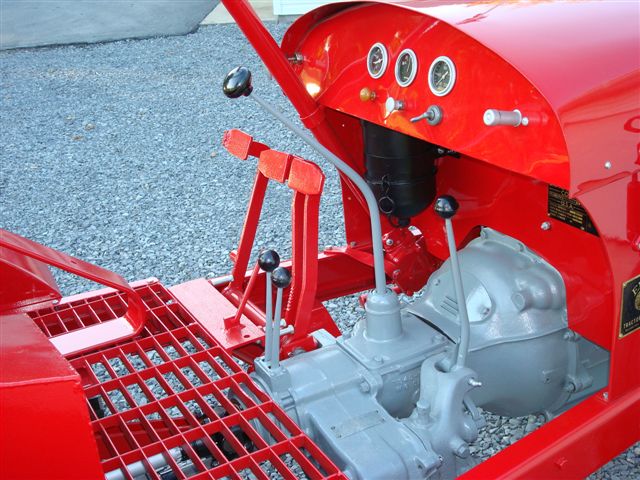

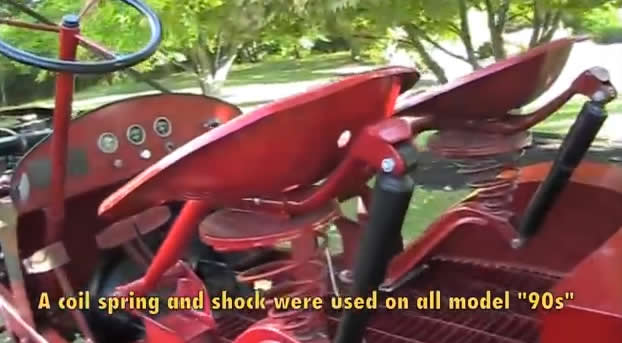

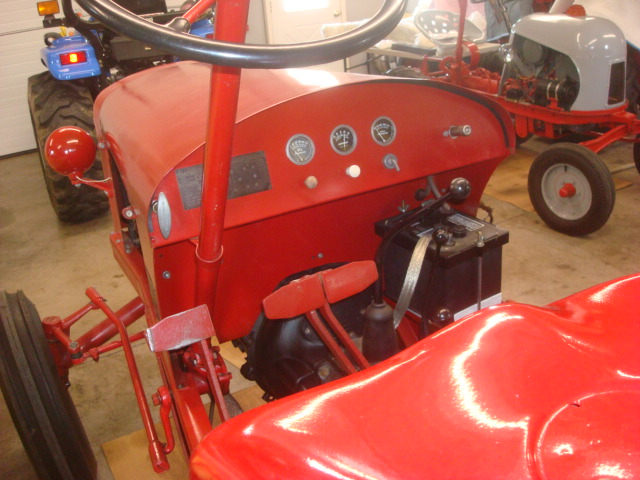
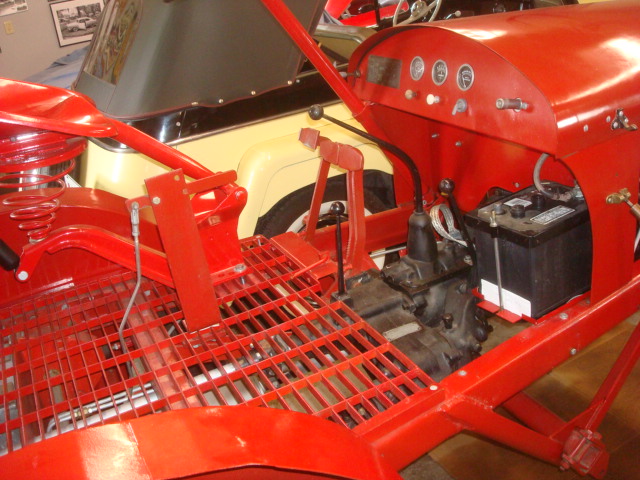
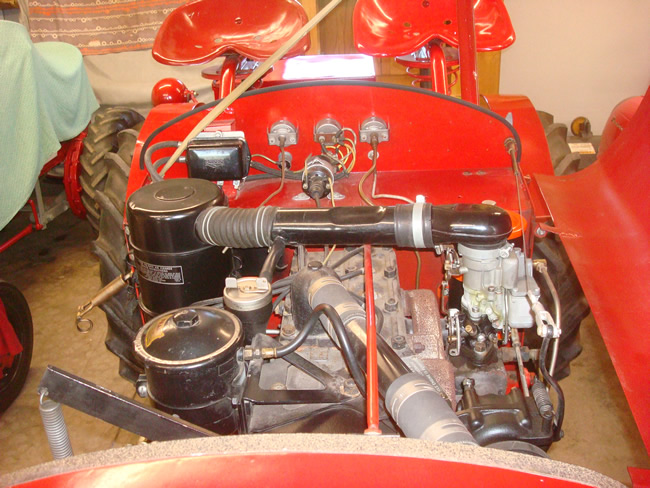
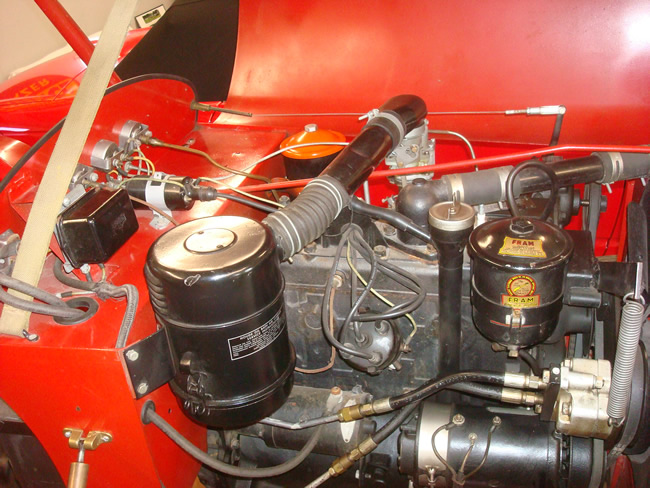
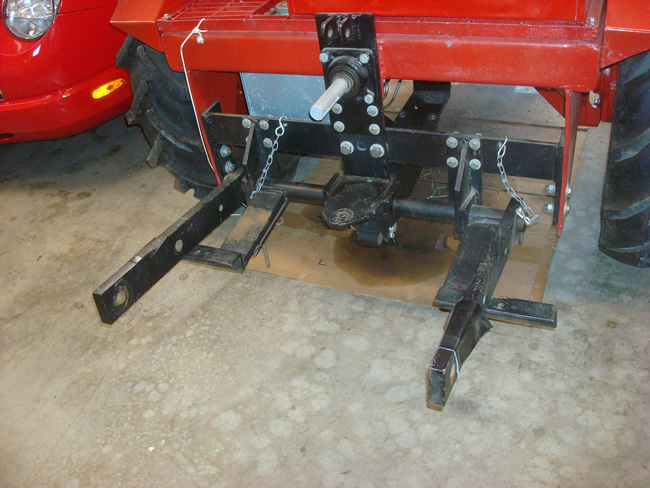
Would the t84 trans been a factor on the model 88 for breakdowns and the t90 an upgrade? why the breaking of the short axle? Larger wheels would have added a lot of torque beyond orig specs?
I wonder if there are any more here in SA, besides the four already accounted for.
That’s Lonnie on the yellow one. I drove this thing at Rantoul last year.
Steve, I believe they had gear reducers on each axle too
Flyingfish/Marc,
We have been to SA on 2 occasions now and have found only 4 of the 46 Empire tractors that were actually shipped to this country. Are their more? Hard to know. We feel we were lucky to have found these 4. Thanks for asking, Are you from SA?
Carl
Hi Carl
Thanks for the answer to my question, if possible would it be possible to know where they are (privately of course), as I have never seen on in person and would like too, my son included.
I may have seen one in the past and not known it at the time but I am not sure.
The above should answer your question as well, yip, I’m from SA. I reside in Springs, on the Far East Rand.
Marc,
Yes that is possible. Please email to me at info@empiretractor.net and I’ll get you the names of the owners in SA.
Carl
Thanks, will do.
I found a Model 90 # 6555 year 11 47 t-90 transmission tractor looks to be complete sheet metal is in good shape for the rust condition not totally eaten up rust is the color it was back in the woods had to cut the brush out from it to pull it out and load engine will turn over transmissions seems to be locked in gear rear wheels 1 is complete rust decayed tires are shot ha
Jim,
Glad to hear you have found an Empire. This is a New Find for our club and hope you will email me at info@empiretractor.net and give me your contact information. We’d also like to send you further info on the Empire. Hope to hear from you soon.
Regards,
Carl Hering
he found one 1989 got it running got stolen just found last weeks wheres can he find parts
Andre,
We can help you with any parts you might need for your Empire. Check out our web site and drop me a note via email. Let me know the Serial number of your tractor.
Regards,
Carl
There was an auction near Spencer Iowa last Saturday that I found out about after it was over.It had two Empire tractors that the way I was told were runners,and parts for another.sounds like they went cheap.Did any E-Willys readers buy any of these?Wish I would have known about it sooner two of my sons attended the auction.
Doug, wow! I didn’t hear about that auction.
Damn…….how did I miss the auction in Spencer Iowa ?? Normally I can find most farm auctions listed for Iowa, but this one flew under the radar. I sure could have used some parts for my pathetic Empire project that I drug out of the Missouri woods this summer. That grille in a parts pile would really have helped me out…….oh well.